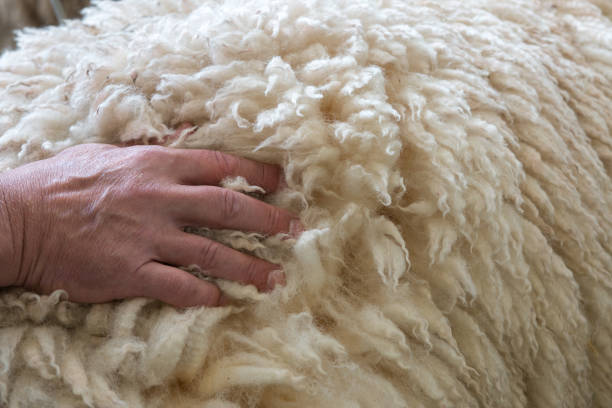



Article by: Hari Yellina
A Western Australian sheep has been seized and de-fleeced after being unshorn for seven years, with his wool measuring in at a whopping 22.2 kg. The sheep, dubbed “Big Sheep” by local shearers, strayed off into a tagasaste plantation [saltbush trees] as a lamb in 2015, and despite being spotted multiple times, it wasn’t until last month that he was persuaded into a horse float and carried to a shearing shed. The sheep were remarkably calm to shear, according to Neridup farmer David Cox, despite the fact that they hadn’t been handled in almost a decade.
He recalled, “They hauled him out onto the board, he was like a huge turtle, lying on his back with his feet in the air, and [the shearers] took a great, deep breath and got into him.” “To put it another way, he was a lot faster coming out of the shed than he was sprinting into the shed.” According to Australian Wool Innovation’s April 2022 projection numbers, the average weight of a fleece cut in Australia is 4.54kg. Mr Cox had expected his woolly wether to cut much more, and was startled when the official total was only 22.2kg. Mr Cox was happy that the fleece surpassed that of a recent New Zealand icon, “Shrekapo,” which was shorn with little over 18kg of wool at Easter, but Big Sheep’s fleece falls far short of the Guinness world record of 41.1kg established by Canberran ovine “Chris” in 2015.
According to wool dealer Andrew Beaton, the reason Mr Cox’s sheep cut substantially less could be due to diminished crimp. “The wool is pretty spongy,” he explained, “not the dense-type wool you’d get today.” “He’s a 2014-drop wether, according to his bloodline. It simply wouldn’t have the same density as the sheep in Canberra.” He claimed that the staple length of Big Sheep’s fleece was close to 40 centimetres when stretched out. Mr Beaton had spent decades working in sheds before becoming a wool dealer, so when Mr Cox told him Big Sheep had been caught and was about to see a handpiece, he realised it was an opportunity he couldn’t pass up. “I have a sample of wool from station country that is perhaps a little bit longer, but I never saw the complete fleece, and seeing that sheep get sheared is definitely a once-in-a-lifetime experience.”
“It’s quite large. I went to the shearing shed to get it, and it’s sitting in a three-foot-high butt [of a wool pack] with half a butt of wool but only one fleece.” Farmers aim to shear their merino sheep at least once a year, according to Mr Cox, and if one gets away, it usually only misses a single shearing. He stated, “I think most people take pride in bringing all of their sheep into the shed every year and not missing too many.” “Hopefully, this is a one-time occurrence that does not occur frequently.”
Big Sheep possessed the bodily structure to carry the massive fleece, which weighed in at over 100kg, making shearing a difficult task for the shearers. “They were all drawing straws to see who would shear him,” Mr Cox added, “and it took a couple of them to hold him and tear his wool away.” Mr Cox was thrilled to see the wether was in such fine physical shape now that his fleece had been removed. After his trauma, Big Sheep joyously rejoined the mob. “He’s headed back out into the field with a herd of lambs, and he’s now in a feedlot,” he explained.
What will happen to the huge fleece? It will most likely end up on the bodies of residents, but not in the shape of fine micron suits, but rather as beanies or scarves. “We’ll just give it away to someone who wants it and can use it,” Mr Cox added. “There are some ladies who do some spinning and enjoy that longer wool.” First and foremost, Mr Beaton wishes that the fleece can be presented because many people have never seen a fleece of this size before.